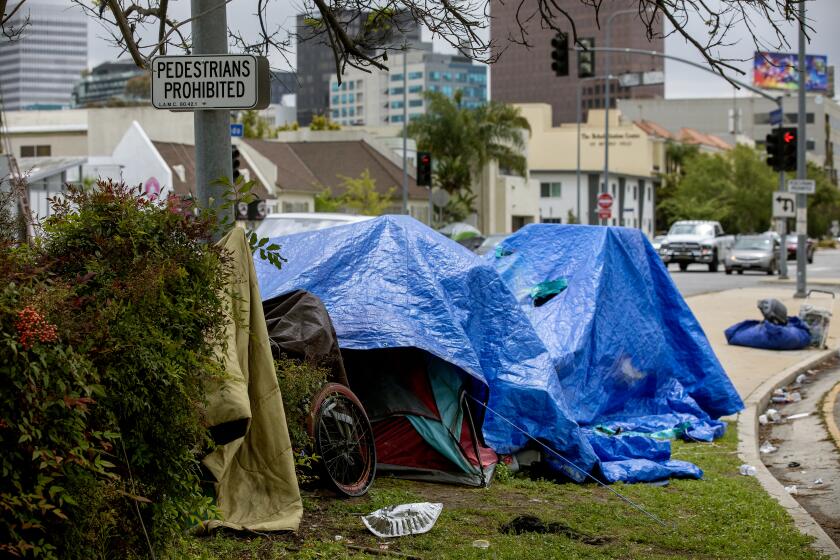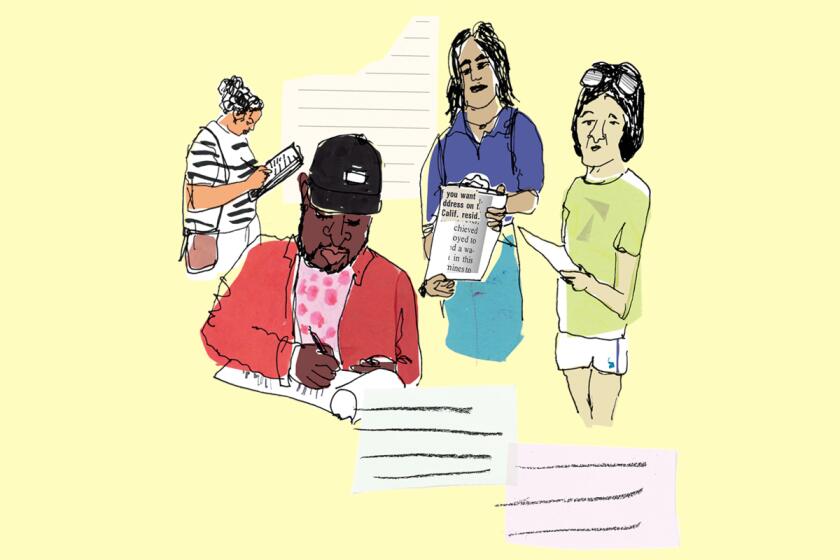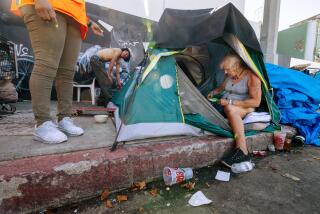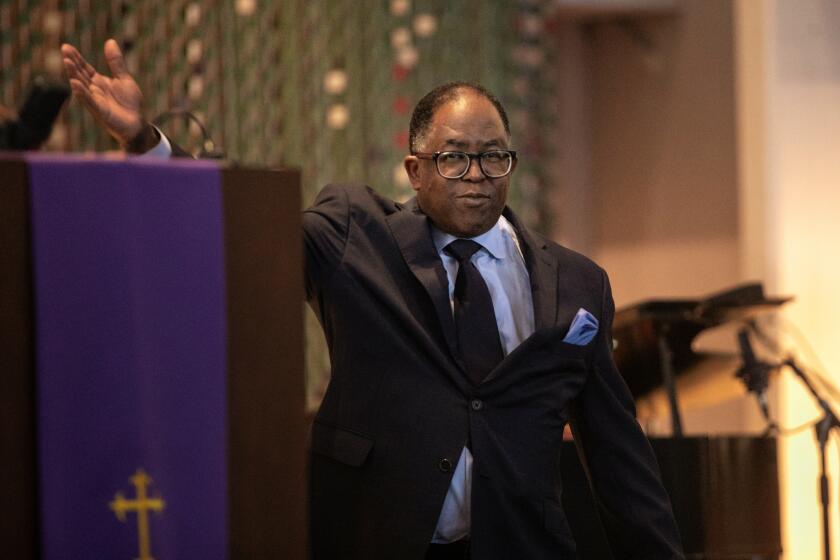In downtown L.A., Bass’ plan to clear encampments faces crime, addiction and resistance
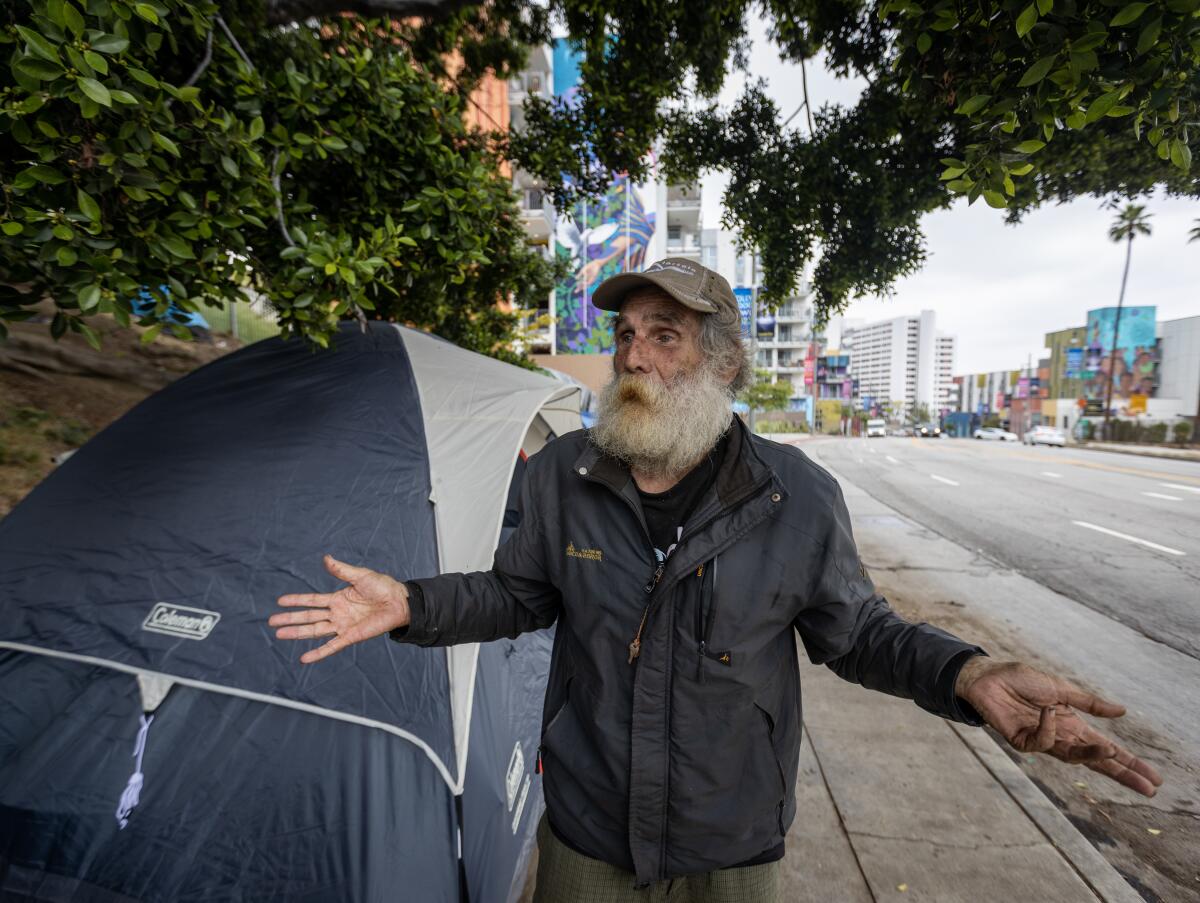
Homeless outreach workers went to the streets of downtown Los Angeles last month and delivered what is now a seasoned sales pitch: Give up your spot on the sidewalk, and try living in a nearby hotel room instead.
David Ruther, who has a tent on Broadway near the 101 Freeway, had an emphatic response: No way.
Ruther denounced the rules that are in place at the L.A. Grand, one of the hotels being used by the city as homeless housing. He said it’s not right that unhoused residents have had their bags inspected when they walk into that hotel.
“I told them I wasn’t going to give up my constitutional rights, and have them search me every time I go to the store to buy a soda pop or a pack of beer,” said Ruther, sitting in an office chair, clutching a Starbucks cup of coffee and a Newport cigarette.
Since she took office, Mayor Karen Bass’ Inside Safe initiative has moved more than 1,200 homeless people off the street in Venice, North Hollywood, Del Rey, Beverly Grove and about a dozen other L.A. neighborhoods. In many cases, encampment residents went into the same motel or group of motels, leaving an area free of tents.
Yet Bass’ initiative recently stalled in one part of downtown Los Angeles: the streets that surround the El Pueblo de Los Angeles Historic Monument, the city’s birthplace and home to Olvera Street and other attractions.
Bass hits back at homeless advocates criticizing Inside Safe, plus more on the week that was at L.A. City Hall.
In April, outreach workers with the Inside Safe program went to that neighborhood and persuaded an estimated 78 people to go indoors, according to figures provided by the mayor’s team.
Yet a month later, at least three dozen tents still populate the streets around El Pueblo, including Main, Spring, Cesar Chavez and Broadway, where Ruther keeps his tent.
In some locations, new arrivals have taken the place of those who accepted hotel rooms. In others, longtime encampment residents have made clear to outreach workers that they’re not going anywhere.
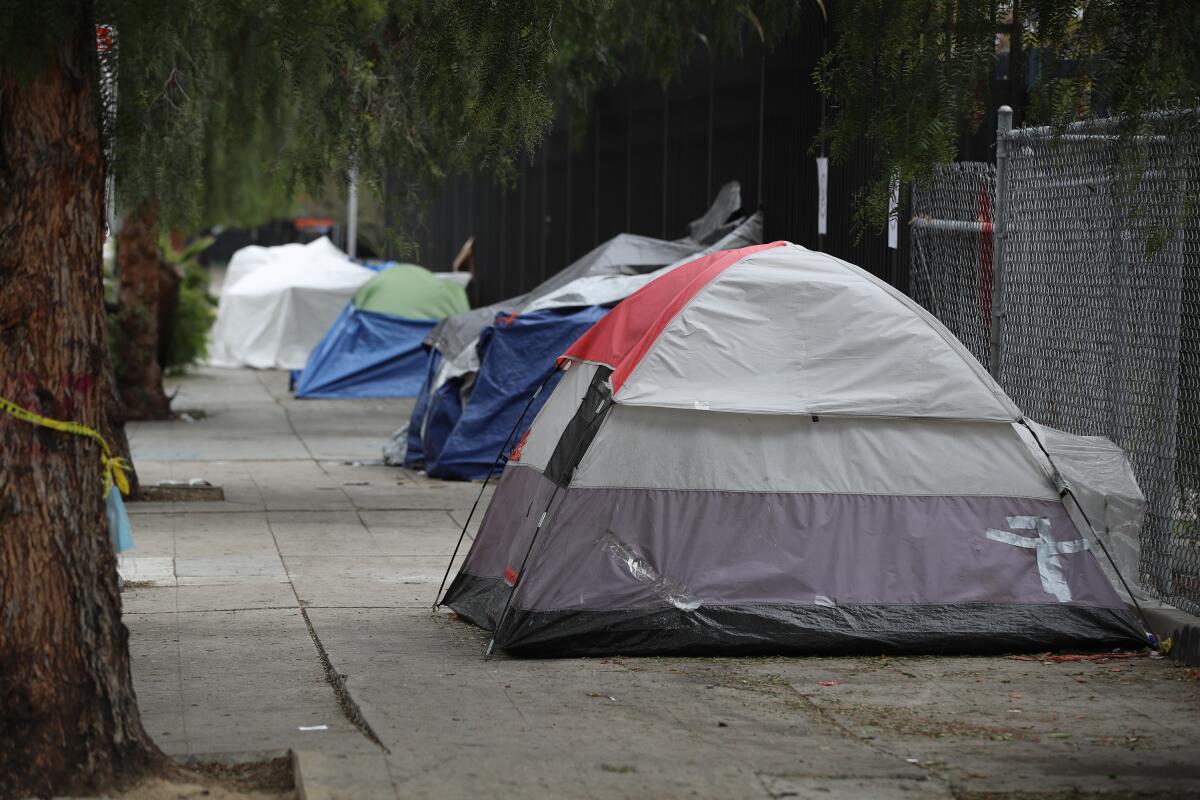
Bass’ team acknowledged the challenges in a May 3 memo, telling City Council members the Inside Safe program had encountered drug addiction, serious mental health issues, criminal activity and “housing-resistant individuals” in that part of the city.
Despite the involvement of two county agencies and several nonprofit groups, “the array of needs did not allow us to get everyone into housing,” wrote Mercedes Marquez, the mayor’s homelessness czar.
The Inside Safe program, which just received $250 million in next year’s city budget, has targeted 17 locations since December. Bass, early in her tenure as mayor, said Angelenos will not view that initiative as a success until their communities are free of encampments. “They want the tents to go,” she said at the time.
Still, Bass says she’s not discouraged by the pace of progress at El Pueblo, pointing out that the vast majority of homeless people being contacted by her program are still saying yes.
In an interview last week, Bass said the Inside Safe program has faced an “intense” set of problems, particularly drug addiction, both at El Pueblo and on the streets that abut the 110 Freeway in South Los Angeles. Those locations have made up three of the last four Inside Safe operations.
“There were literally people that overdosed during the operation” at El Pueblo, she said. “And the only thing that saved them was the fact that we were with USC’s street medicine [teams], and they had to administer Narcan.”
Bass said her homelessness team will carry out a “deep dive” on Inside Safe in the coming days, examining the program’s weakness and identifying strategies for improving it.
“We know we’re going to encounter some encampments where there’s resistance. I mean, I don’t think anybody’s been naive about that,” she said. “But then we’re gonna have to figure out — what do you do when people are resistant.”
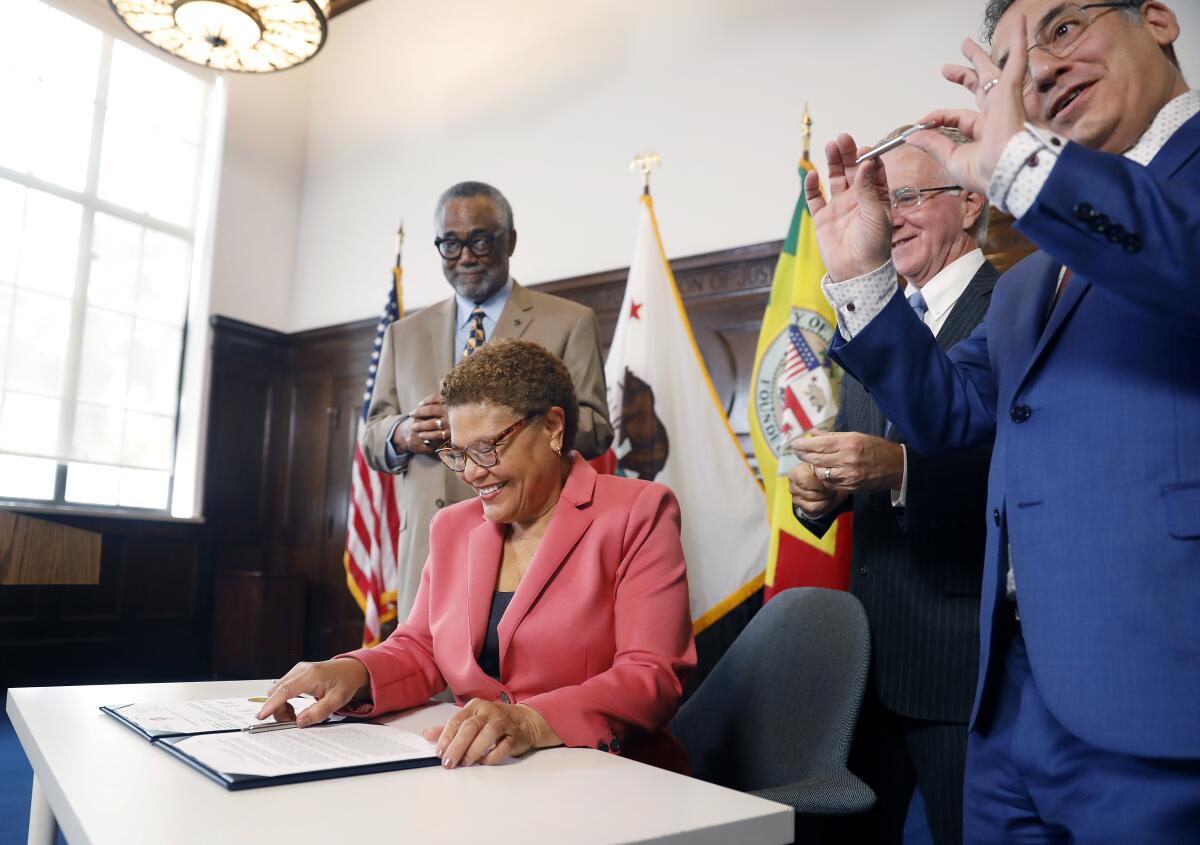
Bass is not the first politician to try to get their arms around the encampments near El Pueblo. Then-Mayor Eric Garcetti opened the city’s first A Bridge Home shelter in 2018 on the neighborhood’s eastern edge, not far from Union Station. But that facility was not enough to meet the need.
After the outbreak of COVID-19, the number of people living near El Pueblo grew dramatically, occupying at least six streets in the area. As pandemic restrictions were scaled back, Councilmember Kevin de León, who represents much of downtown, took a two-pronged approach to the area.
De León’s office, working with outreach teams, offered the area’s unhoused residents beds inside two Bridge Home shelters, the L.A. Grand and Hilda L. Solis Care First Village, an interim housing facility. In December 2021, his office reported that 84 households there had moved indoors.
At the same time, De León designated some stretches of sidewalk near El Pueblo as “41.18 zones,” named for the section of the Municipal Code that prohibits camping in locations chosen by the City Council. Homeless advocates assailed the new 41.18 zones, saying they criminalized poverty. Some branded the L.A. Grand and Solis Village, which require their inhabitants to follow certain rules, as “carceral,” or prison-like.
Over the following year, the streets around El Pueblo slowly repopulated. Some of the holdouts moved their tents to locations just outside the 41.18 zones.
Among them was Philip, who frequently relies on a manual wheelchair and is now living on Cesar Chavez Avenue.
Philip, who is in his 70s and declined to give his last name, told The Times last year that he considered the L.A. Grand to be a “concentration camp.” He said he would rather be arrested than be forced into that facility, which had a curfew and regular room searches.
A year and a half later, the Inside Safe team has not changed his mind. Even though the L.A. Grand no longer has a curfew, Philip said he still has no interest in going there.
“Once they get in there, there are certain orders they give — you can’t do this, you can’t do that,” he said last week. “That’s not democracy. That’s a concentration camp.”
That type of hostility is at odds with the message the mayor has delivered since launching Inside Safe. During her State of the City address, Bass said the program had “finally dispelled the myth that people do not want to come inside.”
Bass, during her interview last week, said she always expected there would be some unhoused residents who refuse to move indoors. And she acknowledged the rules at the L.A. Grand are “very strict.”
The mayor said her team will be looking at the rules at Inside Safe’s hotels and motels, developing “consistent standards” for each location.
“When we encounter people who are resistant, we’re going to have to use different strategies, different services,” she said. “And we are trying to build those services out now.”
You can help someone get on the path to housing — and make your voice heard on issues of housing and homelessness. Learn how with Shape Your L.A.
De León, who took office in 2020, said some of the challenges at El Pueblo can be attributed to its location. Unhoused people have settled in the area, he said, after being released from nearby jail facilities or arriving from the buses and trains that converge at Union Station.
De León also thinks the area has not received enough drug addiction and mental health services, which are the responsibility of Los Angeles County.
“We can house the homeless and clean up the area incessantly, but if L.A. County does not step up and provide the mental health and addiction services that are so urgently needed, it will be a never-ending story,” he said.
Cheri Todoroff, the county’s homeless initiative executive director, pushed back on that assertion, saying the county has been working closely with the city at El Pueblo, sending mental health clinicians, substance use disorder counselors and healthcare professionals.
“To this day, they are continuing to engage clients at the site,” she said.
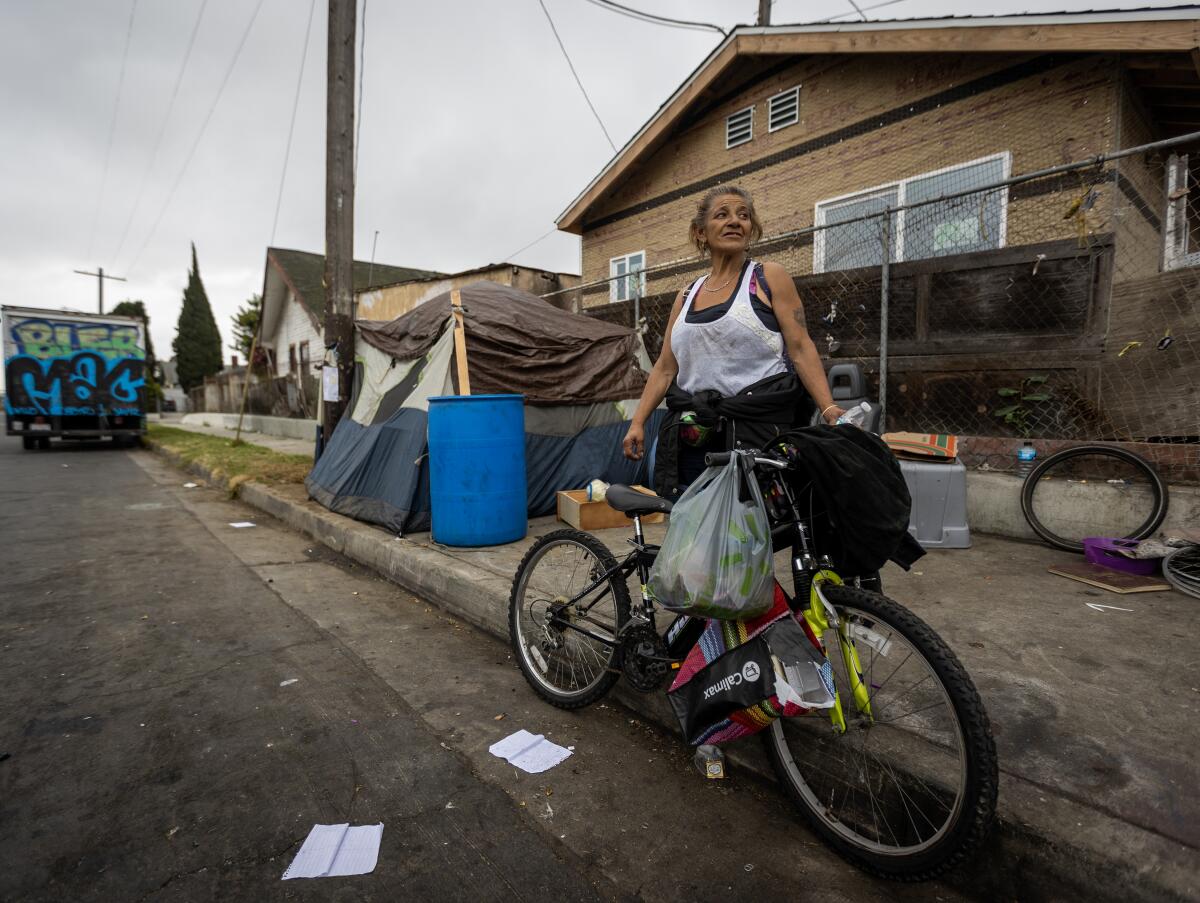
El Pueblo is not the only location where the mayor’s program has seen slower progress than at its earlier operations.
In late April, the mayor’s team took Inside Safe to a section of South Los Angeles that hugs the 110 Freeway, targeting encampments from 42nd Street south to Vernon Avenue.
Bass’ team has estimated that about 50 people went indoors during that operation. On Monday, those streets still had 15 tents or tent-like structures, many near an elementary school.
Inside Safe went to another South L.A. location last week, focusing on streets along the 110 between 47th and 51st. During that operation, DASH buses whisked more than 50 homeless people to motels.
Still, not everyone got on the bus.
Willie Gutierrez, who has a tent on 51st, was initially interested, chatting up the outreach workers who set up folding chairs on a nearby overpass. But when it came time to move, he hadn’t found a home for his ladder and his buckets of paint.
“If I’m not ready, I’m not ready,” the 53-year-old said.
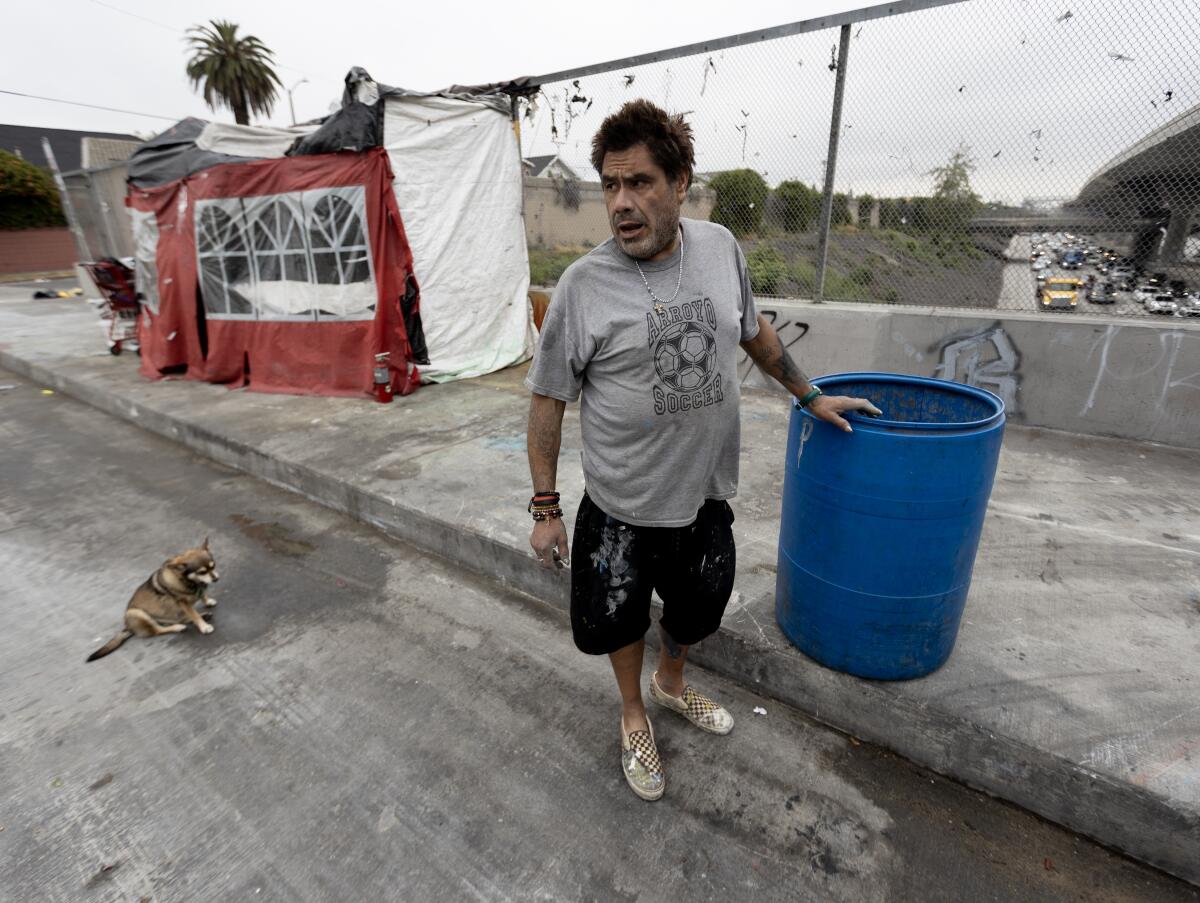
Days later, Gutierrez told The Times he had dealt with his supplies and was pursuing a new plan: moving to San Bernardino County to live with his sister. Meanwhile, one of his unhoused neighbors now sounds like something of a booster for Inside Safe.
Beyanira Lopez, 58, said she recently moved into a “beautiful” motel room on Central Avenue. Lopez, who rode back to 51st Street on her bicycle, said she has been trying to persuade two of the holdouts to come indoors as well.
“I get to shower every day. I get to cook inside with my little stove. I get to sleep when I want,” she said. “I’m very happy.”
More to Read
Sign up for Essential California
The most important California stories and recommendations in your inbox every morning.
You may occasionally receive promotional content from the Los Angeles Times.
